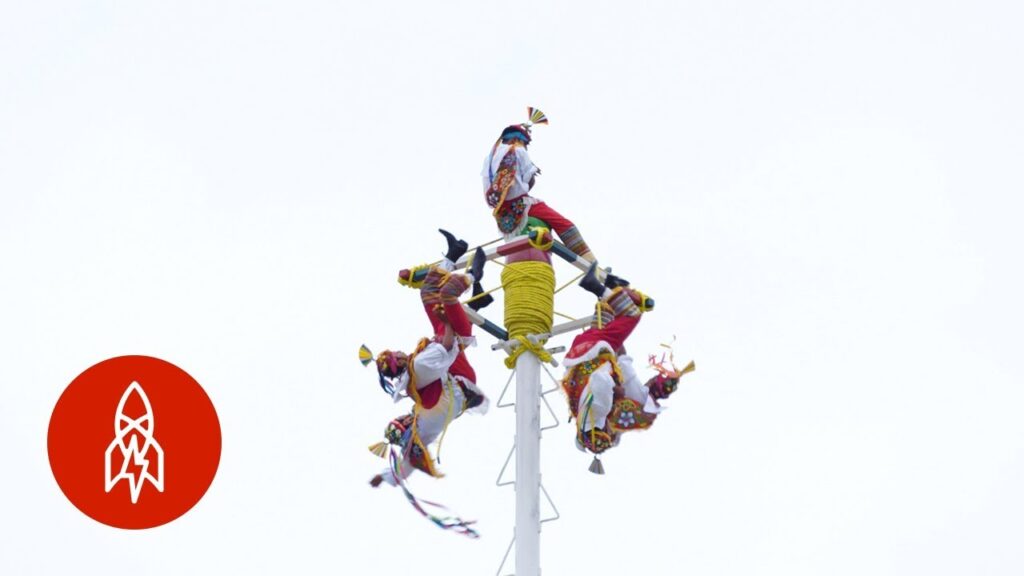The Origins of ‘Los Peces en el Río’
When exploring the vast tapestry of Mexican Christmas traditions, one can hardly ignore the melodious strains of the carol ‘Los Peces en el Río’. This folk song, with its origins shrouded in the mists of time, is an intrinsic part of the holiday season in Mexico. The carol depicts a vibrant scene where fishes in the river are said to be drinking and drinking again to celebrate the birth of Jesus. Its simplicity and repetitive rhythm mirror the flowing waters of a river, making it a captivating piece for audiences of all ages.
The exact historical beginnings of ‘Los Peces en el Río’ remain a mystery, though it is widely regarded as a song that transcended through generations by oral tradition. It is thought to have emerged during the period when Spain had a significant influence on the development of Mexican culture. This blend of Spanish colonial heritage with indigenous elements gives the song a distinctive place in the repertoire of traditional Mexican Christmas music. Its lyrics, though seemingly whimsical, carry deeper reflections on the nativity scene from an imaginative perspective.
Over the centuries, ‘Los Peces en el Río’ has not only survived but has thrived, being passed down through familial lines and community celebrations. The song’s enduring popularity is a testament to its ability to evoke the warmth and joy of the season. It is performed widely during Las Posadas, a time-honored reenactment of Mary and Joseph’s search for lodging in Bethlehem. In a country known for its colorful festivities and deep-rooted customs, the song continues to resonate as a beloved aspect of Mexico’s Christmas traditions.
‘Los Peces en el Río’ and Mexican Christmas Traditions
Los Peces en el Río is a traditional Spanish Christmas carol that has found a special place in the heart of Mexican holiday celebrations. The song portrays the Virgin Mary caring for the baby Jesus with a vivid backdrop of nature – highlighting fish in the river, which in a sense, are said to be jubilantly celebrating the birth of Jesus Christ. It is commonly sung during the Posadas, a series of nine festive nights leading up to Christmas which symbolize Mary and Joseph’s search for lodging in Bethlehem.
In Mexico, Christmas is not just a single day event but a blend of cultural and religious practices spanning the entire month of December, and ‘Los Peces en el Río’ is one of the traditions that bring to life the festive spirit of the season. Amongst the merriment and the singing, the carols stand out as a spirited reminder of the country’s deep-rooted Christian beliefs intertwined with indigenous influences and Spanish heritage.
Las Posadas, as mentioned, are an integral part of Mexican Christmas traditions and ‘Los Peces en el Río’ contributes to this colorful tradition. Families and friends gather each night to re-enact the journey of Mary and Joseph, with children often dressed as angels and shepherds, and adults taking on the roles of the holy couple. Each night ends with joyful singing where carols like ‘Los Peces en el Río’ fill the air, along with the breaking of piñatas and a feast that brings everyone together.
Another beloved tradition is the decoration of nativity scenes or Nacimientos, which are often intricate and expansive, displaying not just the main figures of the nativity but often an entire village. In many of these Nacimientos, the flowing rivers adorned with fish are a nod to the beloved carol, reflecting the song’s lyrics and its embrace of nature as a witness to the sacred event.
Food also plays a significant role in the Christmas festivities, with traditional dishes like tamales and atole being served after the Posadas and Midnight Mass. As families gather to share these meals, it’s not uncommon for ‘Los Peces en el Río’ to be hummed or played in the background, cementing its status as an inextricable part of the Mexican Christmas atmosphere.
Exploring the Lyrics of ‘Los Peces en el Río’
The traditional Christmas carol ‘Los Peces en el Río’ is a classic melody that echoes through the festive season in Mexico. At first glance, the lyrics paint a vivid picture of nature and religious customs, intertwining the observance of the birth of Jesus with peculiar imagery of fish in the river. The repeated chorus «Pero mira cómo beben los peces en el río» which translates to «But look how the fish drink in the river,» may initially seem whimsical, but it holds a deeper connection to the purity and life-giving qualities of water, a vital element in Christian baptism.
In the lyrics, the act of fish drinking is portrayed not as a mundane everyday occurrence, but rather as a reflection of the Virgin Mary’s purity and her role in the nativity. Every verse unfolds with observations of her caring for the Child, and her tireless work, which is contrasted with the serene image of the fish in the river – creating a connection between the seemingly effortless flow of nature and the divine event. This juxtaposition invites reflection on the beauty and miracle of life, a theme that resonates strongly in the spiritual tapestry of Mexican culture.
Moreover, ‘Los Peces en el Río’ encapsulates the joy and celebration synonymous with Mexican Christmas traditions. The song’s catchy rhythm and evocative lyrics are often accompanied by dance and merrymaking, as it’s not just an auditory experience but a cultural phenomenon that invites participation and community bonding. This carol, beyond its literal meaning, serves as a metaphor for the vibrant and lively spirit that fills the towns and cities of Mexico during the holiday season.
How ‘Los Peces en el Río’ Reflects Mexican Culture
‘Los Peces en el Río’ is not just a popular Christmas carol known throughout Mexico, but a song that captures the essence of Mexican culture in its lyrics and melody. The song depicts the Virgin Mary washing clothes in a river and fishes observing her activity. This imagery is deeply engrained in Mexican tradition, as it represents the importance of the Virgin Mary in the country’s spiritual life, particularly in the context of Christmas celebrations which are central to Mexican culture.
The rhythm and structure of the song, often performed by mariachis, reflect the joyous and celebratory spirit that Mexicans bring to their religious observances. Music is an indispensable part of daily life in Mexico, and ‘Los Peces en el Río’ is often sung by families and communities coming together, highlighting the strong bonds of family and community that are a hallmark of Mexican society. Furthermore, the communal singing of this carol demonstrates the collectivistic nature of Mexican culture, where social gatherings and collective activities are favored.
In addition to the spiritual and social aspects, the content of the song subtly touches upon Mexico’s deep connection with nature. The reference to the river and the fishes represents the integration of the natural world into Mexican folklore and the overall aesthetic of the culture. Mexico’s diverse landscapes deeply influence its cultural expressions, and the river serves as a symbol of life and sustenance, which is significant in many Mexican tales and customs.
Moreover, the carol’s simplicity and repetitive lyrics make it accessible to all ages, thus ensuring its transmission through generations. This reinforces the oral tradition in Mexican culture, which is crucial for preserving history, teaching values, and fostering a sense of identity among the people. The role of such songs in cultural transmission showcases the respect for tradition and the importance of generational continuity in Mexico.
Popular Interpretations and Covers of ‘Los Peces en el Río’
The Mexican Christmas carol «Los Peces en el Río» has charmed listeners around the globe with its joyful melody and traditional lyrics. It is not just in Mexico where the carol is popular; numerous artists from different countries and genres have put their unique spin on it, creating covers that resonate with their own audiences. Each interpretation brings a fresh dynamic to this enduring holiday classic, further cementing its place in the Christmas celebrations of many cultures.
One of the most beloved interpretations comes from the Spanish singer Manolo Escobar, whose voice carries the spirit of Spanish folk music with a deeply emotive performance. His rendition has become almost synonymous with the song in Spain, acquiring a near-iconic status in the Spanish-speaking world. Escobar’s heartfelt delivery transcends language barriers and touches the hearts of those who appreciate traditional yuletide songs.
Lola Beltrán, a revered figure in Ranchera music, is known for her powerful interpretation of «Los Peces en el Río.» Her cover is a showcase of her vocal prowess and her ability to breathe new life into a classic tune. Beltrán’s version presents the carol in a new light, blending the sacred and the festive in a way that is both moving and celebratory, often bringing listeners to their feet with its spirited performance.
More contemporary artists have also embraced the song, bringing it into the realm of modern pop and jazz. For instance, the Mexican-American songstress Lila Downs has infused the carol with her unique blend of genres, incorporating indigenous Mexican sounds and languages, which has garnered attention not only in Mexico but around the world. Downs’ innovative take on «Los Peces en el Río» exemplifies how traditional music can be reinterpreted through a modern lens without losing its core essence.



